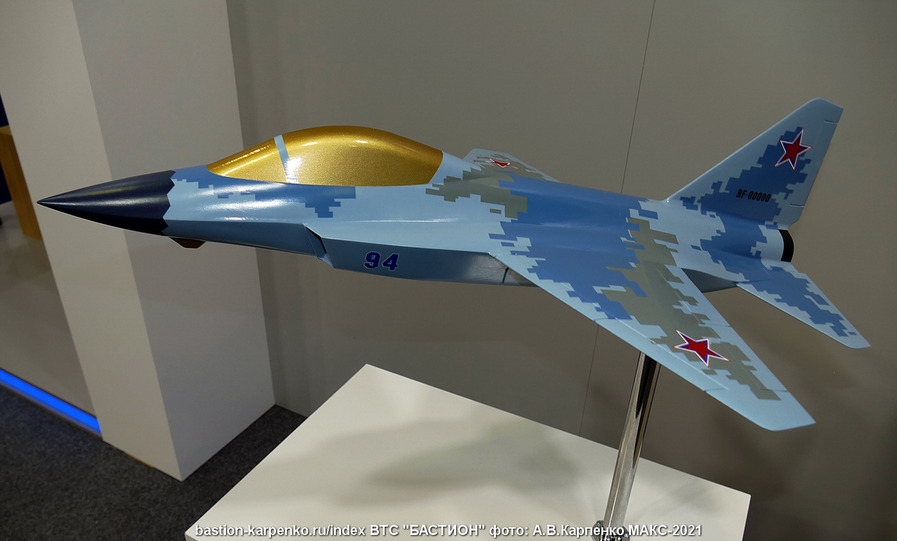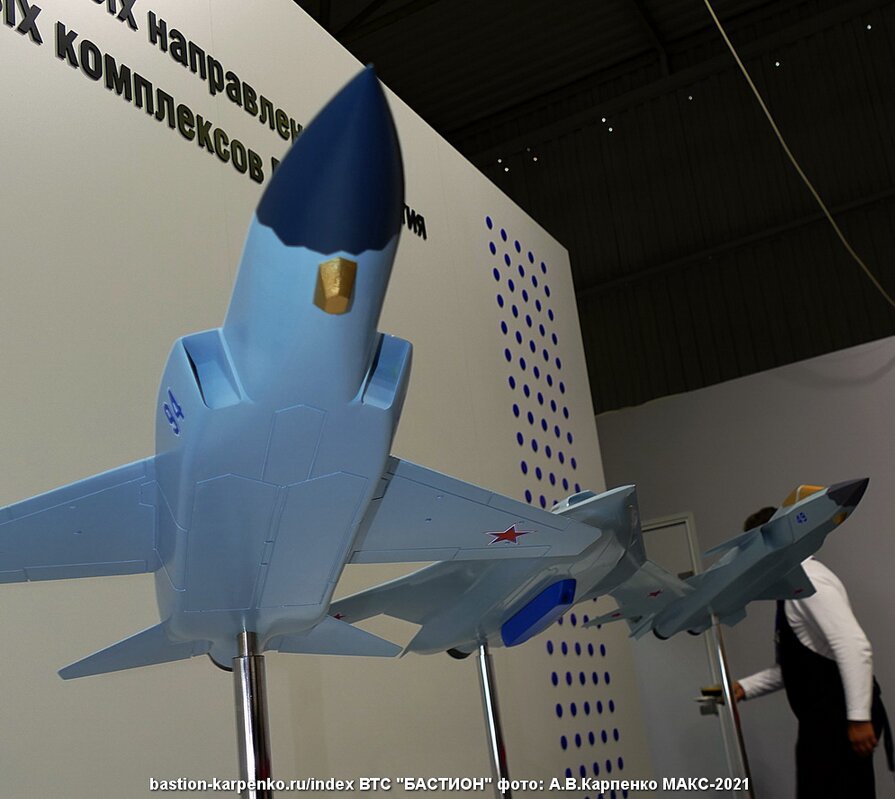I expect the market for such an engine as the Klimov RD-33 and its derivatives to basically evaporate over the next 5 years unless MiG manages to sell the MiG-35 more. The Chinese are going to put the FC-31 into service eventually and they won't be using imported engines in the series production of it that is for sure. They have their own engine the WS-19. And you can pretty much bet it will also be sold to Pakistan.
So ask yourself why they used the RD-33 with the gearbox moved and called RD-93 but is not used in any Chinese aircraft that they operate today, when the rather more powerful AL-31 that is used in the Flankers they operate is in use and is also being cloned?
Even in its base model the Al-31 has about 12 tons thrust compared with 8 tons for the RD-33 engine... surely if you are making a single engined light fighter the Al-31 which you use in aircraft you fly yourself and are making a clone of its engine makes more sense.
The difference is costs to buy and cost to operate, where the RD-33 wins hands down, so if you are making a small light fighter with one engine you make it even lighter and go for the cheaper 8 ton thrust engine.
China might be copying it... can they make a good copy?
They didn't make a good copy of the German naval engines the Russians bought from them for their Corvettes.
Klimov have been quite busy. They have been developing helicopter engines VK-650, VK-1600, and VK-2500M. Also the turboprop variants of the TV7-117 engine. In fact they are so busy that they had to move some projects which were meant for them, like VK-800, to someone else. Salyut, who manufacture the RD-33, are developing improvements for the Al-222 and the new SM-100 engines.
So they are going to give up all future development of new engines... if they are not looking at improving designs in terms of metalurgy and materials and digital engine management systems what sort of future will they have?
They have passed on engine projects to other companies... so what?
What I sometimes wonder is why doesn't Russia use more common components between military and civilian engines.
Because military engines didn't need thousands of hours of operational potential and high fuel burn rates were fine if they could get the plane flying supersonic for long periods of time.
They have developed a new family of engines called the PD series which are going to be used on aircraft both civilian and military... the prop engines of the Bear were used on the Bear based airliner and also the An-22 military transport, and the line between transport for military and civil use is blurred already.
New PD engines will be used on both, but proper jet engines for their military planes really don't make sense for civilian planes till civilian planes start needing to get supersonic.
For example the Pratt & Whitney civilian engines as used in the A220 are based on the same engine core as the one in the engine of the F-35.
And what a stupid ridiculous engine that is... 30 million dollars for an engine for an aircraft that can't even reach mach 2.
Even the Chinese put two smaller engines in it and made it much better looking in terms of aerodynamics.
You would think they could make a military engine with the cores of the PD-8 and PD-14.
They already have proper military engine lineages for that... why change if the difference in performance is not noticeable.
There is a lot of waste, duplication of work, and yet a lack of some engine categories simultaneously.
The gaps can be explained by the fact that the gaps were filled by a country that has turned west.... it has gone woke and gone broke... it was not a failure of the Russian engine makers... if anything it was the fault of the Russian civilian airlines who chose French and American engines instead of Russian engines.
- They are flight testing a MiG-31 aircraft with fly by wire. I wouldn't be surprised to see yet another modernization program for the MiG-31.
They are also still upgrading old MiGs to BM or K condition and maintaining the fleet, plus testing new missiles that look like satellite launchers and anti satellite weapons, and all this talk about new versions of metals that are much more heat resistant suggests they will be working with new types of Aluminium alloys that could replace steel in the hot parts of the airframe which will dramatically reduce weight too.
The current manual flight control systems probably mean more stresses to the airframe and engines than necessary during operation.
Replacing hydraulic systems and actuators with FBW systems and electric actuators would massively reduce weight and also reduce the amount of flammable materials on board and reduce the risk regarding battle damage... and reduce maintenance costs... especially in very cold or very hot places.
The MiG-35 is being tested in the Ukrainian theater of operations. I expect increased orders for it to be made eventually. It is the only thing they can manufacture which can plug the gap left by the Su-25 losses quickly with a more modern aircraft which can operate at larger standoff distances from air defenses.
I have pointed out that the risk to the Su-25 is so high they no longer fly in and fire directly at targets in the line of sight with cannon and rockets and bombs... now they seem to loft rockets from a distance presumably based on coordinates given to them without line of sight... if they are going to do this at standoff ranges then it probably makes more sense to use glide bomb kits from a greater altitude and greater distance in a MiG-35, which could scan the terrain with a modern AESA radar and provide a detailed live view of the battlefield to troops on the ground in real time with perhaps friendly forces looking at that view and pointing out enemy positions and transmitting that back up to the MiG to engage with glide bombs or weapons like the 40km range Kh-38 or Grom or Grom two glide bombs, or just dumb bombs with glide kits.
Glide kits for cluster bombs would give a similar effect to a lofted rocket attack, but could be launched from much further away.
The F-20 failed in the market because back then the F-5s still had a bit of life left in them. This killed the low end of that market. And Reagan basically lifted the ban on export sales of the F-16. A much better fighter for a fraction more of the price. The F-20 was just too little too late. You could say that the Gripen is a more modern iteration of the concept which has had moderate success.
But you are all saying single engined fighters are much cheaper and more affordable than twin engined fighters so even the operators of F-5s should have swapped them for F-20s to save money and halve their engine support costs... except that isn't true. The costs of the F-20 were no half that of the F-5 because its engine costs were actually higher and its performance was better but not enough to warrant the extra costs.
Mig-AT was never bought. Failure.
The Yak-130 was too expensive and never replaced the L39s completely... the MiG-AT was not as good as the Yak-130 at the high end, but was much cheaper and would have completely replaced the L39.
It was rejected, but it was no failure.
Mig-31 production line is closed for years now. They just upgrade some.
They are upgrading most of them... they put the engines back into production and are upgrading older models to BM standard or K standard.
Mig-29M, Mig-35, Mig-29k are just relikt from the past based on a fighter that was a target for nato missiles for years. They need to move one from it.
That is funny because Su-27s and Su-24s and Su-25s are getting shot down in the Ukraine conflict just as often as the MiG-29s are.
The MiG-29 was never meant to be an air dominance fighter, it was supposed to be a capable but cheap numbers plane which is exactly what it is... and what many countries actually need. An Su-27 costs more to buy and more to operate and most things that will shoot down a MiG-29 will also take down an Su-27 too.
Mig-41 Unseen yet.
Yeah, they don't need to do any work on it till it enters serial production...
That is how things work.
Even the turks, south koreans, japanese are creating their own 5th gen fighters.
Yup... and how are they going?
They are being made in frustration at the limited alternatives available to them from the US.... I wont say west because only the US has 5th gen fighters for sale and they said no to Turkey already... which was probably a lucky escape for Turkey to be honest.
I notice you didn't mention the new super 5th gen super fighter from France or even just the EU, because it is a paper project too.
If they did make any there is a good chance the US would demand they send it to Kiev and offer to give them F-35s instead... it worked with oil and gas...
It actually doubled. And not just because of israeli or french component but because they pay to build it 2 times. First for the components and parts to russian firms and then for the shipping and assembly by indian firms.
Tripled. Support costs from France and Israel were enormous... and their munitions were horrifically expensive too, though they claimed to have amazing performance. A view shattered when they had to use some and the performance did not seem to be worth the price at all.
The Yak-130 is way better. The RuAF made the right choice. Also imagine they had bought the MiG-AT and now they had to to replace all those French SNECMA engines.
I disagree. The Yak-130 was sold on the basis that while it was a large fraction of the cost of a light fighter (ie MiG-29), the payoff was that it could be used instead of a light fighter so while as a trainer it was expensive, as a light fighter it would be cheap and you could buy it in enormous numbers and save lots of money because it was fully combat capable and could replace the Su-25 in the light strike role and the MiG-29 in the short range interceptor role and be cheaper than either.
The problem was that it was not a good light fighter... lack of radar makes it very limiting as the Russian Air Force found to its cost with the MiG-29UBT which only had a ranging radar and was not considered an operational aircraft because of that. Add a radar and self defence avionics and it cost more than a MiG-29 or Su-25 which defeated the entire purpose.
It didn't even end up replacing all the L39s which were better for basic training and cheaper to operate too.
MiG could easily have replaced the French elements... the first flights were in the mid 1990s but the Yak didn't enter production and use till the 2010s, and the Yak had a Ukrainian engine that also had to be replaced which limited its introduction and production rate too.
From what I have read the second prototype of the MIG-AT had Russian avionics.
Part of the agreement was that Russia could locally produce and improve the French engine... which likely would have happened by 2014.
The engine is also used in the Alpha jet...
At least the Ukrainian Al-222 used the Soviet materials technology base. So it was much easier to reverse engineer. If this aircraft was made today they could use the Al-55 engine in it. Because now it is available. But they would still need to improve the electronics in it.
If the Russian AF had seen through the bullshit and chosen the MiG-AT they could easily have converted it to the Ukrainian engine the Yak used
The MiG-31BM has proven itself more than worthy in Ukraine. It has managed to shoot down aircraft in BVR mode with zero combat losses. Over a hundred of these aircraft are available after they were upgraded.
They put the engine back into production to take more out of storage and into service in the BM and K versions.
Those MiG-29 aircraft which were shot down are basically early versions of the MiG-29. The MiG-29M is a vast improvement to the airframe's capabilities increasing range and loiter time and the MiG-35 electronics upgrade makes it even better.
MiG have been upgrading the design since it entered service but most seem to think a MiG-35 is a Serbian MiG-29 with its radar not working and no ground support against HATO with AWACS and JSTARS and hundreds of western planes...
None is produced. Nor ordered.
A single engined version of the MiG-AT is being ordered because the Yak-130 is not good enough.
Their requirements changed near the end and started requiring the capacity to carry a 3 ton payload and essentially be an Su-25 and MiG-29 replacement... which it clearly never has. The shift in those requirements made the Yak-130 the best choice, but without those requirements the MiG-AT would have made more sense and would have replaced the L39 completely already.
They are going to end up needing three aircraft to replace the L39 and Yak-52, one of which is rather expensive.
Both the MiG-AT and Yak-130 have flybywire systems and can simulate the flight performance of advanced 4g fighters.
Competitors are fielding 5th gen fighter all over the world. Mig-35 is outdated right now and it still doesn't have its aesa radar which is the only difference from mig-29M. Mig-31 isn't produced anymore.
They will fit an AESA radar when it is ready. When carrying R-37M missiles it will take out F-16s before the F-16s will even know the MiG is there.
They produced a lot of MiG-31s and many are in storage. Work on its replacement is ongoing and it has proved itself in the Ukraine conflict.
As BRICS expands I think improved trade with countries around the world will lead to more export orders and MiG-35s offer an aircraft that is affordable to buy and operate in significant numbers... the core issue with AESA radars is production... it simply does not make sense to make AESA radar for 6 fighters... they have a few thousand elements per radar and if you are only making 6 radars those radars are going to be horribly expensive.
Of course they are making AESA radars for ships and helicopters and SAMs and even for air to air missiles and as element production increases the costs will come down and performance will go up... eventually it will become cost effective, but honestly people keep saying they don't have AESA radars fitted... but if that was the case then why didn't they make 24 of them because without the AESA radar they would be much cheaper.
I suspect part of the reason they only made 6 is because their AESA radars are new and expensive and are probably having teething troubles... which happened to every other country who introduced new AESA radars for their aircraft.







